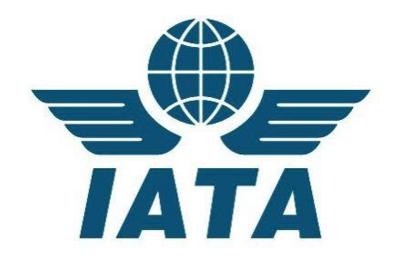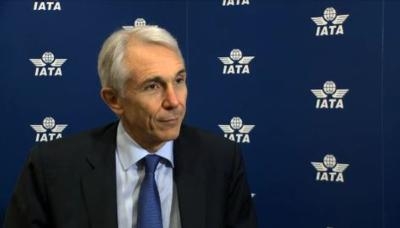Thu, Apr 07, 2016
The EUR 245 Billion Question - Why Everybody Has a Stake in European Airspace Modernization
The International Air Transport Association (IATA) has released a study projecting a one million job and EUR245 billion (approx. $279 billion) boost to European prosperity in 2035 from airspace modernization.

Europe is well-served by air connectivity, which today supports 11.7 million European jobs and $860 billion of European GDP. But it is inefficient. Average flights are nearly 50 kilometers longer than they need to be in terms of distance traveled and delays average around 10 minutes per flight. This inefficiency negatively impacts prosperity, productivity and sustainability. An IATA-commissioned study by SEO Economic Research estimated that these inefficiencies, if unchecked, will grow to cost the European economy EUR 245 billion in 2035.
“Air traffic management inefficiency is not just a burden for airlines. Travelers suffer wasted time from delays. The environment suffers from avoidable emissions. And businesses face reduced productivity. Combined, all of this has a cost on Europe’s competitiveness. And the cost is shared broadly. This study shows that every European—individual or business—has a stake in this issue,” said Tony Tyler, IATA’s Director General and CEO.
Europe has long had a plan to improve its air traffic management—the Single European Sky (SES) project—which aims to deliver a threefold increase in capacity, improve safety by a factor of 10, reduce environmental impact by 10%, and cut costs by 50%.
“Europe has failed in achieving the SES goals. Despite a strong European Commission vision and push for SES, national interests have prevailed. The incentive to improve efficiency is to make Europe more prosperous with the realization of EUR 245 billion and one million jobs in 2035. The launch of this study is a call to action across the spectrum of business and individual interests in Europe to help deliver a stronger, more connected economy,” said Tyler.
A fully modernized and reformed airspace in 2035 (compared to a “do nothing” scenario in which the status quo prevails) will generate tangible benefits to European tourism, trade and the knowledge economy. Examples of incremental and indicative improvements include:
- 1.3% more hotel beds to aid the tourism industry
- Up to 2.2% faster expansion of trade in services
- 5.5% more patent applications and 4.7% greater research spend
- 1.3% more employment in knowledge-intensive industries

“Predicting the future is always fraught with uncertainty. But the starting point already shows a clear gap. The US has one provider to manage its airspace and Europe has 38 providers to manage a similarly complex air transport sector. And if nothing is done, the problem will only get worse,” said Tyler (pictured).
The release of the study marks the launch of a Europe-wide campaign. IATA will be calling on consumer groups and business associations to recognize the broad importance of efficient air connectivity to the economy, productivity and quality of life at the national level. “Quantifying the value of what we are aiming for in jobs and GDP should be a great motivator in aligning national policies and action with a vision for an efficiently-connected and competitive Europe. EUR 245 billion is a worthy goal!” said Tyler.
(Source: IATA news release)
More News
Airport Rotating Beacon A visual NAVAID operated at many airports. At civil airports, alternating white and green flashes indicate the location of the airport. At military airports>[...]
Aero Linx: Fly for the Culture Fly For the Culture, Inc. is a 501(c)(3) non-profit organization that serves young people interested in pursuing professions in the aviation industry>[...]
Klyde Is Having Some Issues Comprehending The Fed's Priorities FMI: www.klydemorris.com>[...]
Also: Viasat-uAvionix, UL94 Fuel Investigation, AF Materiel Command, NTSB Safety Alert Norges Luftsportforbund chose Aura Aero's little 2-seater in electric trim for their next gli>[...]
Also: EP Systems' Battery, Boeing SAF, Repeat TBM 960 Order, Japan Coast Guard H225 Buy Despite nearly 100 complaints totaling millions of dollars of potential fraud, combined with>[...]
 ANN's Daily Aero-Term (04.25.24): Airport Rotating Beacon
ANN's Daily Aero-Term (04.25.24): Airport Rotating Beacon ANN's Daily Aero-Linx (04.25.24)
ANN's Daily Aero-Linx (04.25.24) Klyde Morris (04.22.24)
Klyde Morris (04.22.24) Airborne 04.24.24: INTEGRAL E, Elixir USA, M700 RVSM
Airborne 04.24.24: INTEGRAL E, Elixir USA, M700 RVSM Airborne 04.22.24: Rotor X Worsens, Airport Fees 4 FNB?, USMC Drone Pilot
Airborne 04.22.24: Rotor X Worsens, Airport Fees 4 FNB?, USMC Drone Pilot




